Hail Nightmare: Should you Replant or Invest in Plant Health Strategies?
July 2, 2025
TRIAL OBJECTIVE
- A severe thunderstorm struck Dawson County, NE on June 29, 2024, causing extensive hail damage to 30,000 to 40,000 acres of crops. Some fields were completely destroyed (Figure 1).
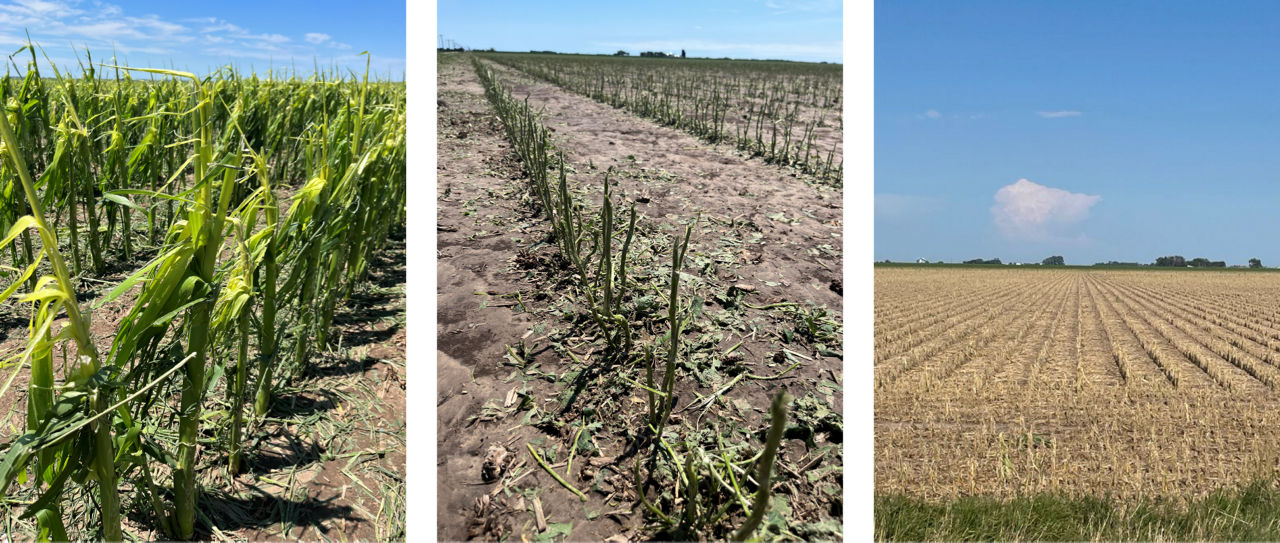
- Given the time of the year, growers had little time to react to the damage. Some growers chose to replant corn with a shorter relative maturity (RM), while others decided to keep their damaged corn but invest in a crop protection program to minimize potential disease infections and increase plant health.
- Two trials were conducted at the Bayer Crop Science Water Utilization Learning Center in Gothenburg, NE to evaluate potential options for corn growers following a severe late-season hailstorm.
- A replant trial was conducted to determine if corn products of two different RMs could reach maturity before a killing frost.
- A plant health trial was conducted to determine the incidence of crown rot and the average yield after hail damage, and if either outcome could be improved with a plant health program.
RESEARCH SITE DETAILS

- To mimic the 100% crop losses faced by severely impacted farmers, a replant trial was conducted at the Bayer Crop Science Water Utilization Learning Center at Gothenburg, NE. Two corn products with different relative maturities (86 RM, 97 RM) were planted on July 10, 2024. The trial was not replicated.
- The planting date was 10 days after the June 29 hail event. This date was selected to match the typical 10-day waiting period after a hail event after which insurance companies generally assess losses and allow replanting.
- The purpose of this trial was to investigate if the replanted products would reach maturity this year, given the very late planting date.
- Trial details are described in Table 1.
- There was a small hailstorm at the Bayer Crop Science Water Utilization Learning Center at Gothenburg, NE on July 6, 2024, that produced noticeable crop impacts later in the season (Figure 2).
- This hail event was much less severe than the one experienced by growers north of the Learning Center on June 29, but it did lead to stalk damage and some corn and soybean lodging in late-season winds.
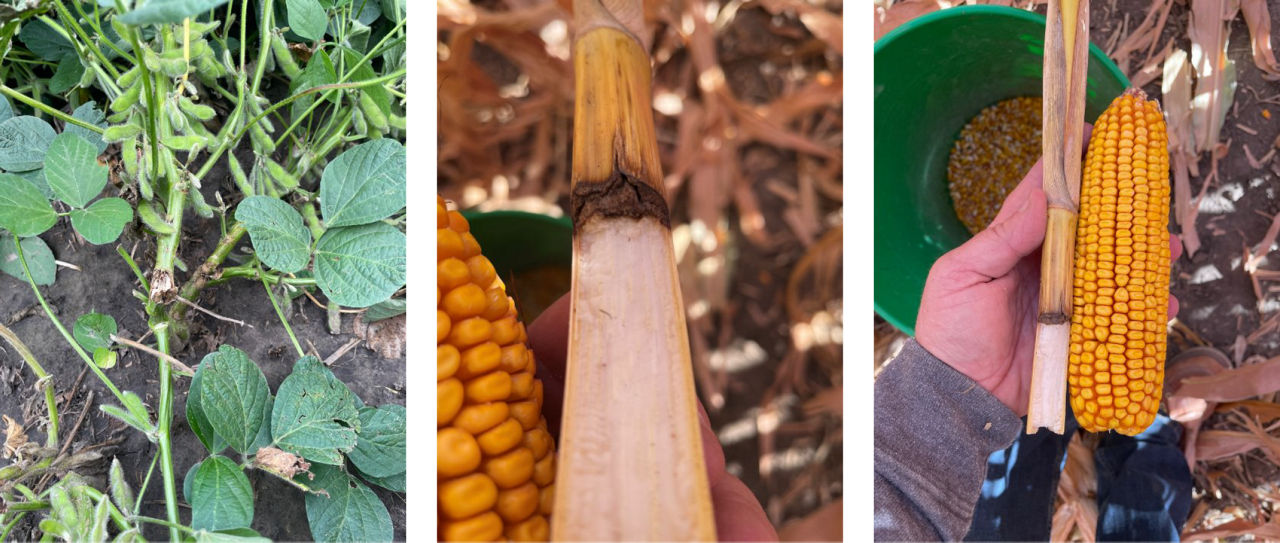

- A trial was also conducted to evaluate whether a plant health program could mitigate the effects of hail damage. This trial was planted on a standard date (May 20, 2024) and then inflicted with simulated hail damage. This trial used four replications.
- A hoe was used to mimic hail injury at the V12 or V16 growth stage, resulting in torn, shredded, and bruised leaves, broken and bruised stalks, and damage to the whorl on some plants (Figure 3).
- Details of the trial setup are provided in Table 2.
- Field operations, corn product, herbicide program, irrigation, and precipitation information for both the replant trial and the plant health trial are listed in Table 3.
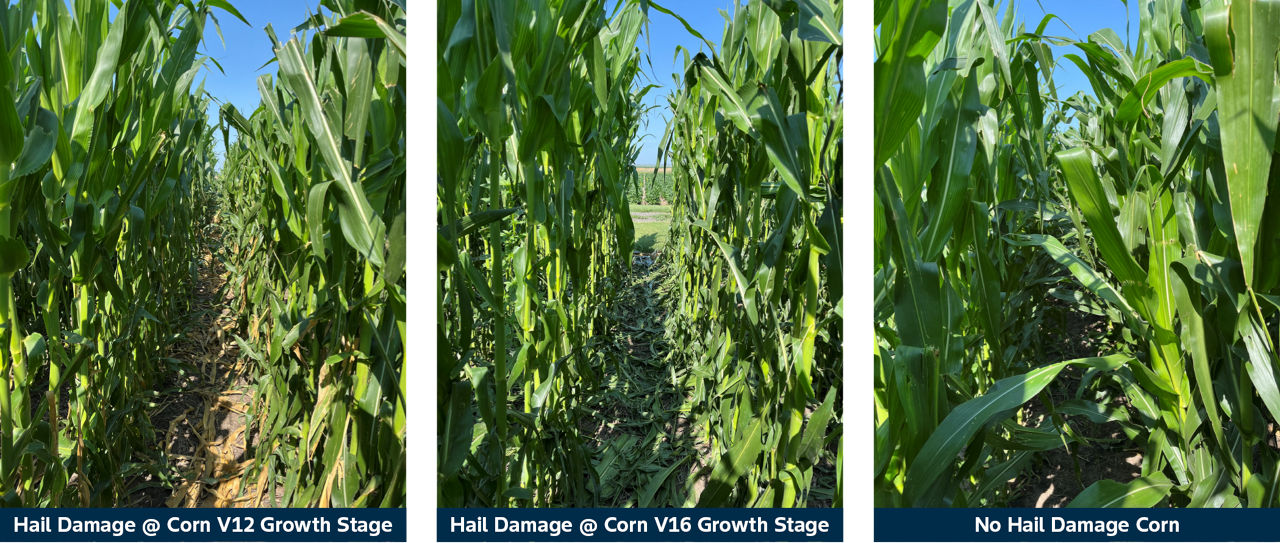

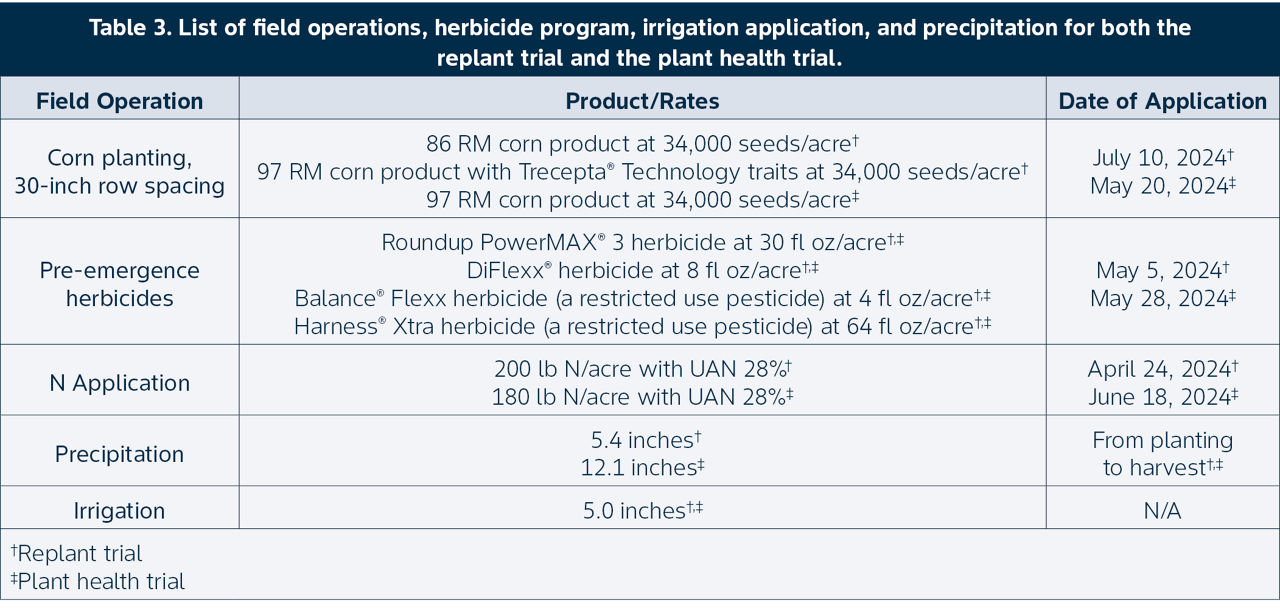
- Crown rot, greensnap, stalk lodging, and final plant population were measured when corn reached the R5 growth stage.
- Total weight, test weight, and moisture content were collected with a plot combine and yield per acre was calculated.
- Statistical analysis for Fisher’s Least Significant Difference (LSD) was performed on the plant health trial data.
UNDERSTANDING THE RESULTS
Hail Replant Trial
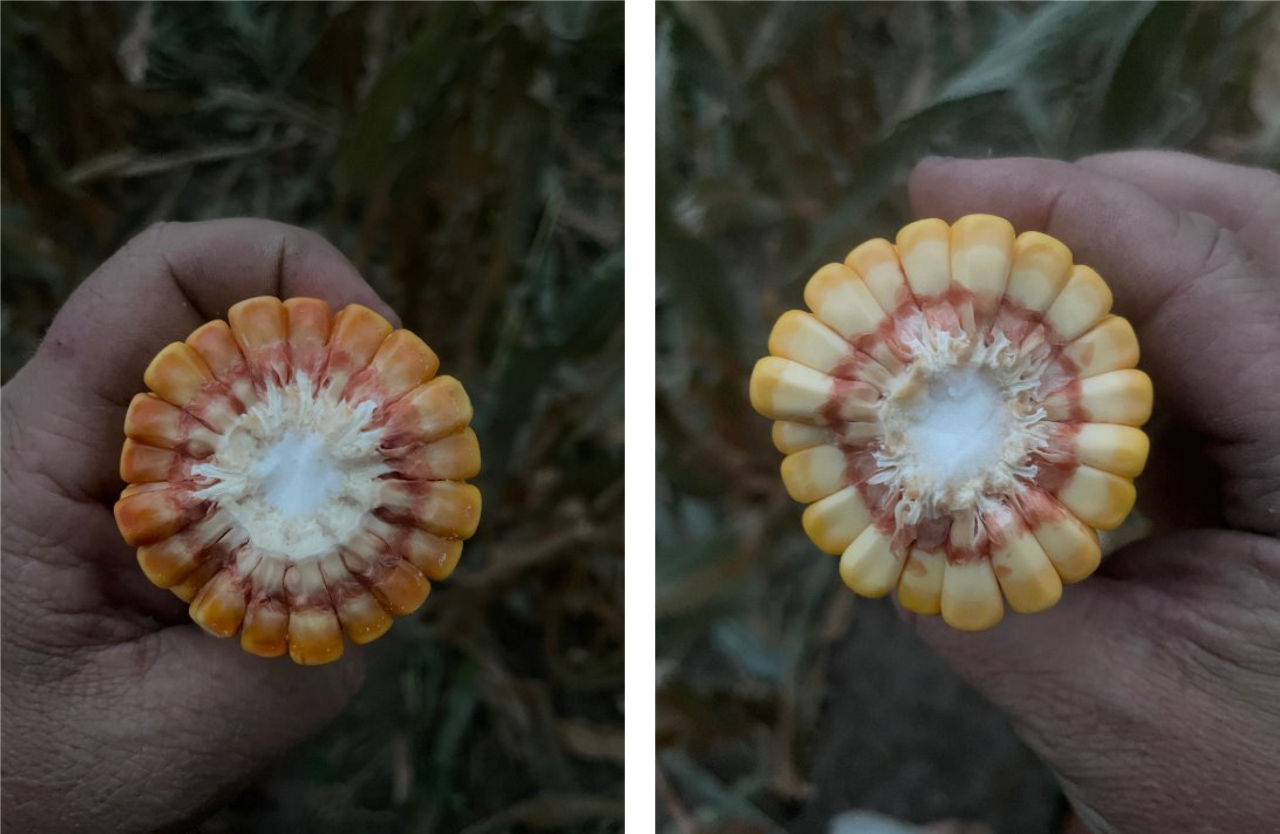
- Neither the 86 RM nor the 97 RM corn products made it to black layer, so the crop was hand harvested at about 40% grain moisture content, dried, and hand shelled for yield.
- The 86 RM corn product planted on July 10 was at about 85% milk line, close to black layer (Figure 4, left).
- The 97 RM corn product was at about 40% milk line (Figure 4, right) but was still hand harvested and yielded about 131 bushels/acre.
- The freeze occurred at 1970 growing degree units (GDU), nearing the 2145 GDU required for maturity for the 86 RM corn product but 450 GDU short of the maturity requirement for the 97 RM corn product.
- The 97 RM corn product was protected from late season ear pests, including corn earworm, by Trecepta® Technology traits that conferred resistance to aboveground insects such as corn earworm and Western bean cutworm (Figures 5 and 6).

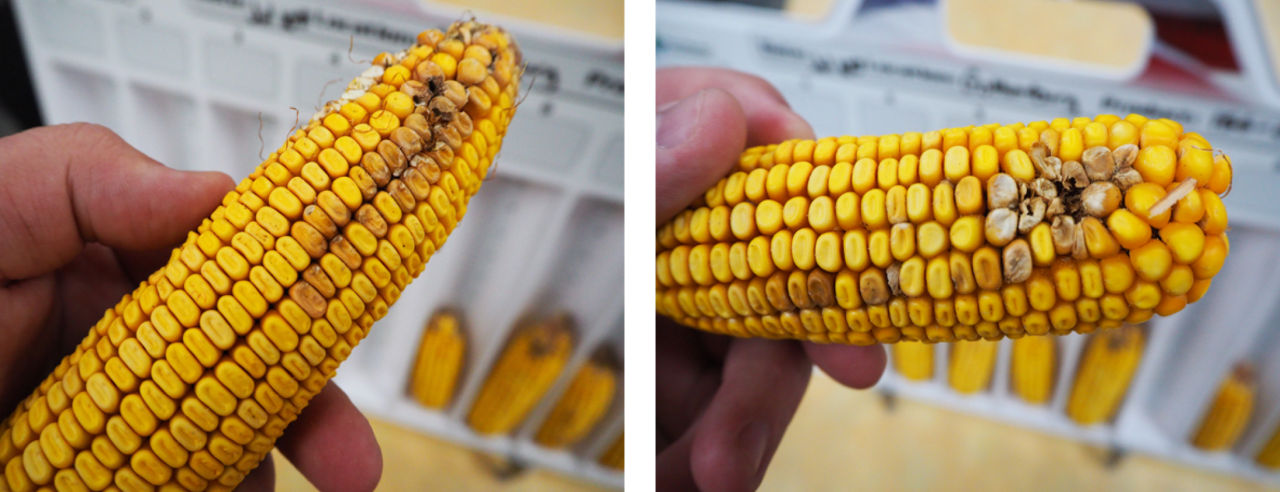
Hail Plant Health Trial
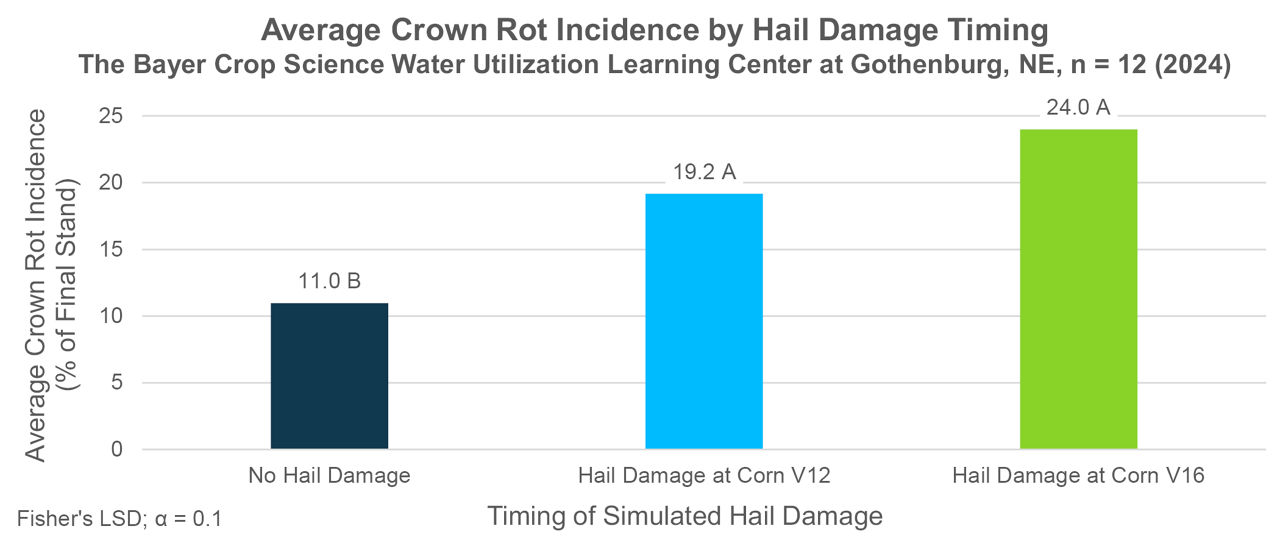
- Corn that suffered hail damage at the V12 or V16 growth stages had a 19.2% or 24% average incidence of crown rot, respectively, both of which were significantly higher than the 11% average incidence in the no hail damage plots (Figure 7).
- Crown rot incidence was not impacted by plant health programs (data not shown).
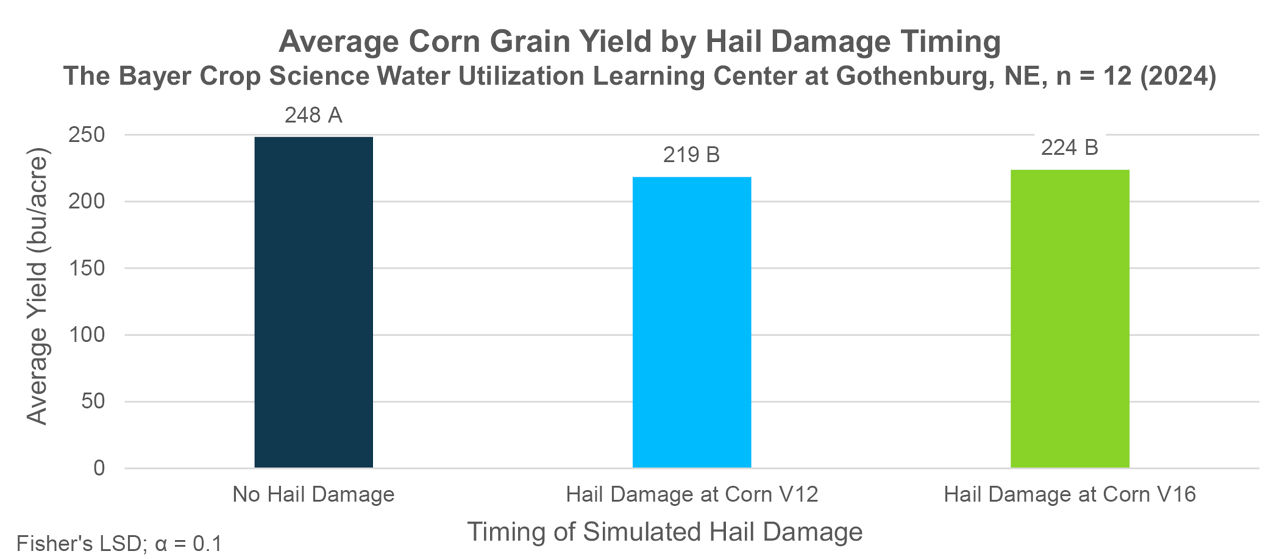
- The average yield in the no hail damage plots was significantly higher than in both the simulated hail damage plots (Figure 8).
- Average corn grain yield was not impacted by plant health programs (data not shown).
KEY LEARNINGS
- In this 2024 replant trial, neither corn product reached black layer before a killing frost. In this situation, growers would need alternate plans for grain harvesting or would need to let the grain stand over winter and then harvest the corn.
- Crown rot disease incidence significantly increased in plots with simulated hail damage. The pathogen likely infected the corn plants through their injuries.
- Plant health programs did not reduce average disease incidence or increase average grain yield in this trial. However, in different situations with different damage severities and/or disease pressures, plant health programs might be beneficial.
- Several agronomic factors need to be taken into consideration when deciding whether to replant after a late-season hail event, such as the remaining GDUs for the year, herbicide programs already sprayed in the field, and corn product relative maturity.
- Visit with your local Bayer agronomist for more information about assessing hail damage, evaluating potential recovery, and recommendations for appropriate management strategies to minimize yield loss.
1222_582600